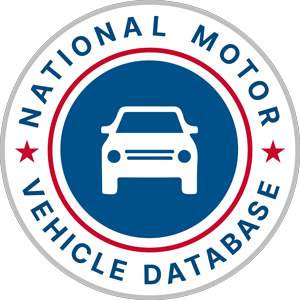What is a VIN?
The term VIN is being used for Vehicle Identification Number, a set of numbers and letters given to every car after being produced. It is a 17-digit code stamped into the chassis of a vehicle that serves as a fingerprint of a car.
Hence, there are no two vehicles in the world that have the same VIN. Besides, unlike registration numbers and other codes, it can’t be changed. The VIN reveals the vehicle’s history and shows its specific features and manufacturer.
Read on to get complete information on the importance, location, and use of VIN.
Since the 1950s manufacturers had been stamping identification numbers on cars. However, they hadn’t been standardized and appeared in different lengths. In 1981 National Highway Traffic Safety Administration (NHTSA) standardized this process for vehicles.
Today the VIN has a standardized format for all vehicles. It is a 17-character serial number that uniquely identifies a car. The characters also transfer specific information.
The VIN does not include any special characters, signs, or spaces. Moreover, the letters “I”, “Q” or “O” are not a part of any combination to avoid the error of misreading.
Hence, there are no two vehicles in the world that have the same VIN. Besides, unlike registration numbers and other codes, it can’t be changed. The VIN reveals the vehicle’s history and shows its specific features and manufacturer.
Read on to get complete information on the importance, location, and use of VIN.
Since the 1950s manufacturers had been stamping identification numbers on cars. However, they hadn’t been standardized and appeared in different lengths. In 1981 National Highway Traffic Safety Administration (NHTSA) standardized this process for vehicles.
Today the VIN has a standardized format for all vehicles. It is a 17-character serial number that uniquely identifies a car. The characters also transfer specific information.
The VIN does not include any special characters, signs, or spaces. Moreover, the letters “I”, “Q” or “O” are not a part of any combination to avoid the error of misreading.
Why is a VIN Important?
The VINs contain complete information about a car. They involve everything from a recall to an oil change of the vehicle. Hence, they are essential to helping reduce car crimes, such as buying/selling stolen cars and theft. Besides, the manufacturers use VINs to handle warranty claims and recalls.
In other words, having a VIN can help a person track a vehicle across its lifecycle. It has vital importance when:
In other words, having a VIN can help a person track a vehicle across its lifecycle. It has vital importance when:
- Buying a pre-owned car; verifies the legitimacy of the car
- Guiding the process of the car’s registration, license plate renewal, and ownership transfer
- Supporting law enforcement in identifying and recovering stolen vehicles
- Ordering appropriate parts for the vehicle
- Identifying the vehicle and confirming the proper coverage by the insurance agency
- Protecting the car’s identity and preventing duplication of the VIN on a stolen vehicle.
If You Want to Buy a Used Car
Before buying a pre-owned car, you should check the VIN and be sure that it is the same as in the registration paper. Check it in as many areas as possible to ensure they all match. Some car thieves may also use the method of VIN cloning which is highly illegal.
Vehicle dealers may provide vehicle history reports. However, when buying from an individual, you will probably need to get a report yourself.
Get access to vehicle history reports easily on our website. Enter the VIN number, press the “decode” button and within a minute have the complete history report in front of you.
To check if a vehicle has a salvage report you may also use the website of the National Insurance Crime Bureau. Their VIN Check tool provides free lookup services to the wide public.
In brief, if you find any inconsistencies when it comes to the VIN on a car, don’t purchase it. Thus, always pay attention to the VINs of the car that you want to purchase. The combination of numbers and letters has to be the same in each location.
Vehicle dealers may provide vehicle history reports. However, when buying from an individual, you will probably need to get a report yourself.
Get access to vehicle history reports easily on our website. Enter the VIN number, press the “decode” button and within a minute have the complete history report in front of you.
To check if a vehicle has a salvage report you may also use the website of the National Insurance Crime Bureau. Their VIN Check tool provides free lookup services to the wide public.
In brief, if you find any inconsistencies when it comes to the VIN on a car, don’t purchase it. Thus, always pay attention to the VINs of the car that you want to purchase. The combination of numbers and letters has to be the same in each location.
If You Want to Know If a Car Has Any Recalls
The recall tool of the NHTSA transfers information on any recalls. So, if a person wants to get data on safety recalls or to avoid buying a car with major recalls, he/she may enter the VIN in a gap and get the needed information. The report also involves recalls precise to the car within the past 15 calendar years.
You may also use our website to get the same information on the recalls.
You may also use our website to get the same information on the recalls.
If Your Car is Stolen
It is a common practice when law enforcement bodies use the VIN number to find the stolen car or its items. So, there are local and state databases that help law enforcement to identify and recover a stolen vehicle or its stolen parts by entering the VIN.
Where is the VIN Located?
The VIN may appear in several places on a car and in some documents. So, to see it easily, stand outside the car and look at the place where the windshield meets the dashboard on the driver’s side of the vehicle. It may also appear in the driver’s side door jamb.
If you are far away from the car, you can also find the VIN on the car’s title or registration card, service, and auto insurance records.
If you are far away from the car, you can also find the VIN on the car’s title or registration card, service, and auto insurance records.
Where Can I Find a Car's VIN?
You can find your VIN in one of the following places in your car; the driver’s side interior dashboard, under the hood, on the engine block, the rear wheel wall (directly above the tire), underneath the spare tire, the driver’s side door, etc.
Look for the VIN in These Other Locations:
You don’t even have to be near the car to know its VIN. So, it may also appear in the following locations:
Insurance Card/Insurance Policy
The insurance policy card and other documents also include the VIN. Besides if the insurance agency has an app, the code can be found there as well once you log in.
Vehicle Title and Registration
The VIN number will also be shown on the vehicle title and registration papers.
Insurance Card/Insurance Policy
The insurance policy card and other documents also include the VIN. Besides if the insurance agency has an app, the code can be found there as well once you log in.
Vehicle Title and Registration
The VIN number will also be shown on the vehicle title and registration papers.
What do the Numbers and Letters in a VIN Mean?
As we already mentioned, the Vehicle Identification Number (VIN) is a unique 17-digit code that is assigned to every vehicle for identification. The VIN code is made up of a combination of letters and numbers, and each character in the VIN has a specific meaning.
- The first three characters are called World Manufacturer Identifiers (WMI). They indicate the country of the car’s assembly and the details of the manufacturer.
- The characters 4-9 are known as the Descriptor Section of the vehicle (VDS). It shows the type of vehicle and involves such descriptions, as model, body style, engine type, etc.
- The last eight characters form the Vehicle Identifier Section (VIS). The latter is a unique serial number by which we can identify a certain vehicle. The VIS includes everything from the production year to the original vehicle equipment.
- A: 1980
- B: 1981
- C: 1982
- D: 1983
- E: 1984
- F: 1985
- G: 1986
- H: 1987
- J: 1988
- K: 1989
- L: 1990
- M: 1991
- N: 1992
- P: 1993
- R: 1994
- S: 1995
- T: 1996
- V: 1997
- W: 1998
- X: 1999
- Y: 2000
- 1: 2001
- 2: 2002
- 3: 2003
- 4: 2004
- 5: 2005
- 6: 2006
- 7: 2007
- 8: 2008
- 9: 2009
- A: 2010
- B: 2011
- C: 2012
- D: 2013
- E: 2014
- F: 2015
- G: 2016
- H: 2017
- J: 2018
- K: 2019
- L: 2020
What if the VIN is Not 17 Characters Long?
If the VIN is not 17 characters long, double-check to make sure that you have the right VIN that has been copied down correctly. Otherwise, if the VIN is less than 17 characters, you have a pre-1981 vehicle. Before 1981, VINs varied in length from 11 to 17 characters.


